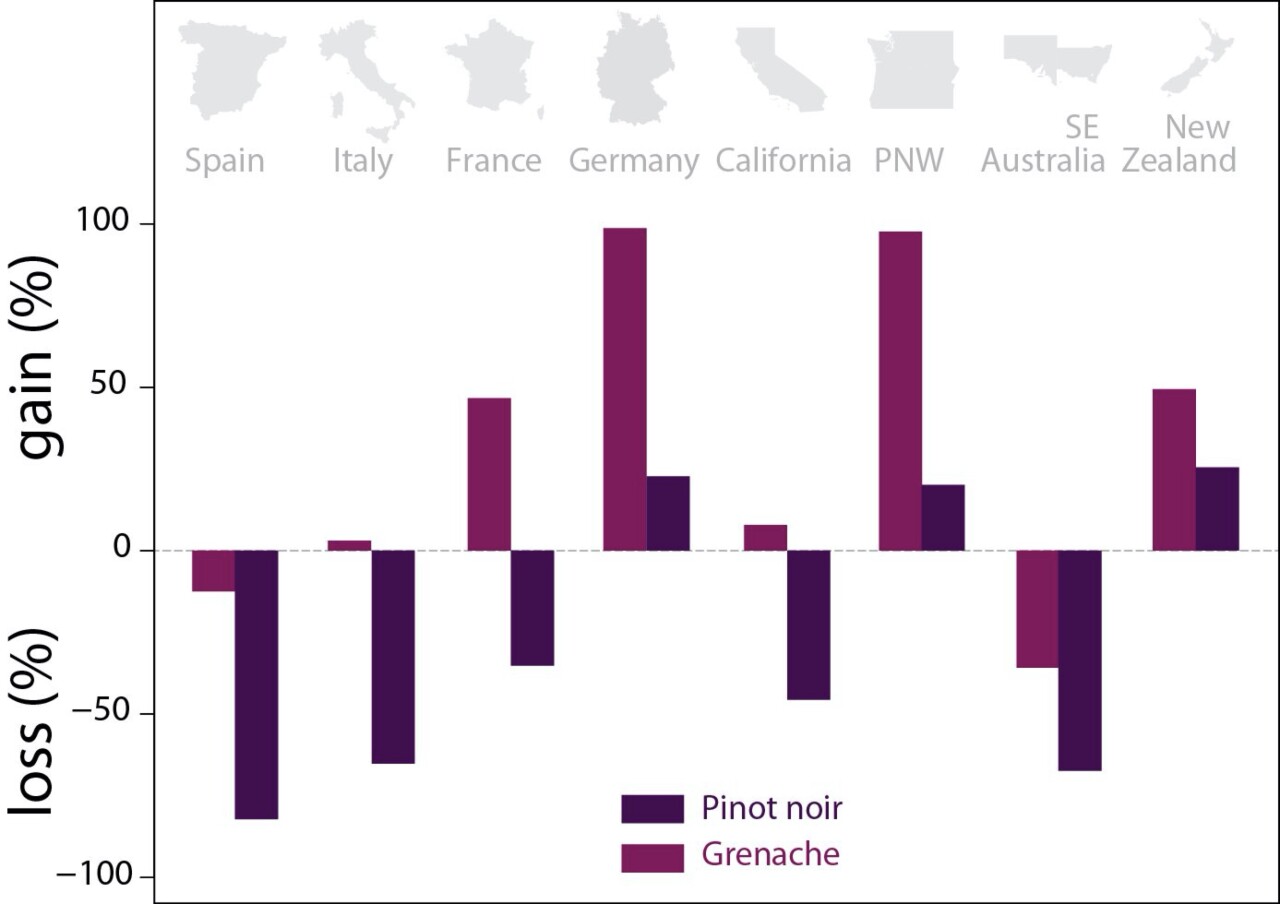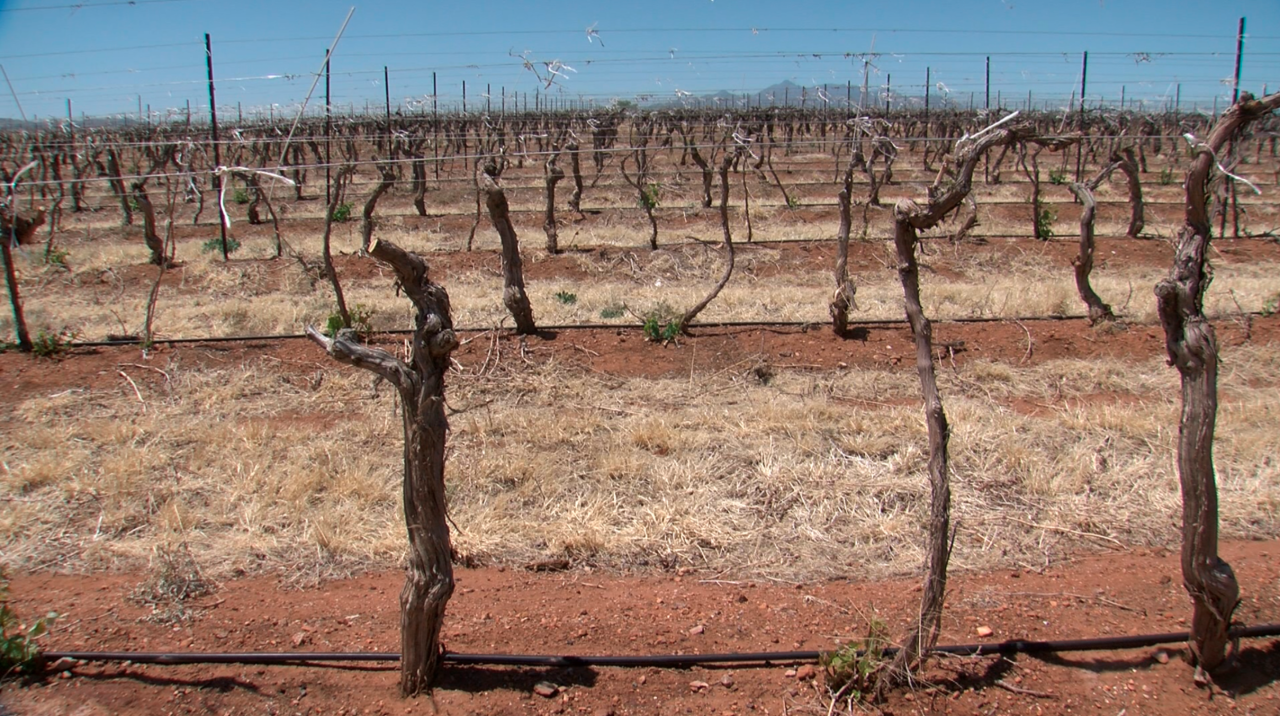The vines are bare for now at Callaghan Vineyards in Elgin, but later this summer and early fall, this piece of Sonoita Valley wine country in southern Arizona will bear fruit. Grapes, specifically.
"We do white, red, rosé, and dessert wines," says owner and wine producer Kent Callaghan. "I'd say 80% production is roughly dry reds."
He and his family began the operation in the summer of 1990. Unfortunately, that summer coincided with one of the hottest heatwaves Arizona has ever experienced. Phoenix reached 122 degrees that June, which is still the hottest temperature on record at Sky Harbor.
Down the road in Elgin and at Callaghan Vineyards, it hit 105. The heat took a toll.
"We lost a bunch of vines as a result and almost immediately we began looking at other varieties that were better suited to the area," he states.
"Wine grapes are very, like most plants, very sensitive to changes in the climate," says Benjamin Cook, a climate scientist for NASA. He specializes in how climate change impacts certain industries, including agriculture. That means wine.
"We're seeing changes in almost every wine-growing region around the world, particularly in some of the warmest regions," Cook says.
This graphic highlights the changes in suitability for different wine growing regions if the average temperature warmed by two degrees.

For most areas, including France and the Pacific Northwest, Pinot Noir would take a hit since its grapes prefer a cooler climate.
Grenache, on the other hand, would fare much better in a warmer environment since its grapes prefer it.
Too much warming, however, could be detrimental to the industry.
"At various levels of warming or depending on how much warming happens, we might expect to see a 50 to 85 percent decline in wine-growing regions without adaptation," Cook warns.
Since 1990, Kent Callaghan has adapted to Arizona's brutal heat, using grape varieties like Grenache.
He's also using rational approaches to irrigation and working to advance the maturity of his grapes, so they ripen sooner.
Although he's able to combat the heat with success, he and fellow winegrowers in the Sonoita Valley now have a different problem: erratic changes in weather within the past 15 years.
Fluctuating and inconsistent monsoons lead to lower yields and rot issues, while severe first fall frosts can defoliate vines before the harvest.
Hailstorms are also a problem, damaging and compromising the quality of the grapes. Callaghan is looking at hail netting to protect his vineyards.

It's an ongoing battle, to say the least.
"Mother Nature keeps throwing curveballs at us. It's definitely challenging. I wouldn't say [it's] a fun ride necessarily, but it's certainly interesting," Callaghan says.






